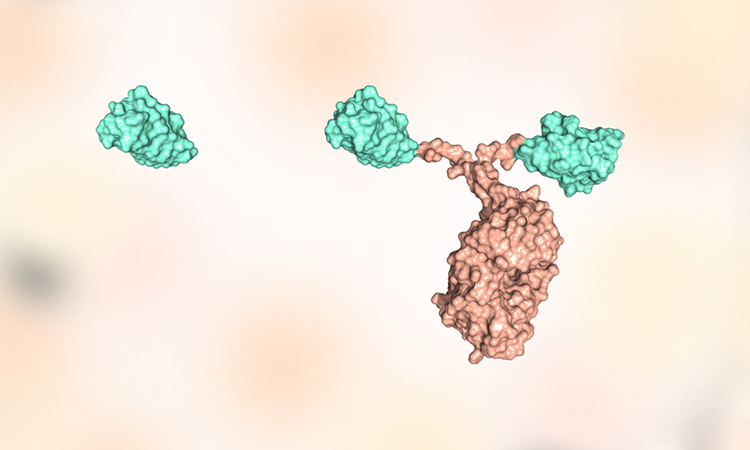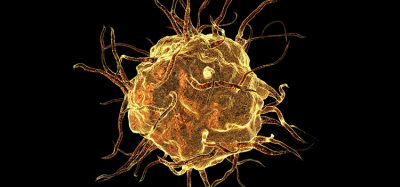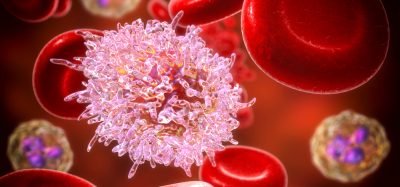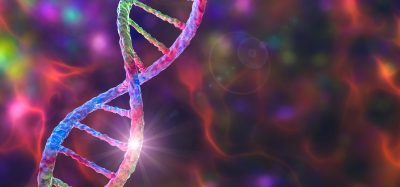Nanobody cocktail shown to block SARS-CoV-2 infection in mouse models
Posted: 27 April 2021 | Victoria Rees (Drug Target Review) | No comments yet
Researchers have used cryo-EM to show that a new nanobody cocktail can bind to the S protein of SARS-CoV-2, neutralising the coronavirus.

Nanobody and antibody
Researchers have identified neutralising nanobodies that block the SARS-CoV-2 virus from entering cells in pre-clinical models. The study was led by scientists at the Walter and Eliza Hall Institute, Australia.
According to the team, the discovery paves the way for further investigations into nanobody-based treatments for COVID-19. The researchers explain that nanobodies are unique antibodies – tiny immune proteins – produced naturally by alpacas in response to infection.
As part of the research, a group of alpacas were immunised with a synthetic, non-infectious part of the SARS-CoV-2 Spike (S) protein to enable them to generate nanobodies against the virus.
“The synthetic S protein is not infectious and does not cause the alpacas to develop disease – but it allows the alpacas to develop nanobodies,” said Associate Professor Wai-Hong Tham, who led the research. “We can then extract the gene sequences encoding the nanobodies and use this to produce millions of types of nanobodies in the laboratory and then select the ones that best bind to the S protein.”
The leading nanobodies that block virus entry were then combined into a ‘nanobody cocktail’. By combining the two leading nanobodies into this nanobody cocktail, the researchers were able to test its effectiveness at blocking SARS-CoV-2 from entering cells and reducing viral loads in mice.
The team used the facilities at Australia’s Nuclear Science and Technology Organisation’s (ANSTO) Synchrotron and the Monash Ramaciotti Centre for Cryo-Electron Microscopy. This allowed the researchers to map how the nanobodies bound to the S protein and how this impacted the virus’ ability to bind to its human receptor.
“We were able to directly image and map the neutralising interaction of the nanobodies with the S protein using cryo-EM at near atomic resolution,” said Hariprasad Venugopal, Senior Microscopist from Monash. “Cryo-EM has been an important drug discovery tool in the global response to the COVID-19 pandemic.”
By mapping the nanobodies, the team was able to identify a nanobody that recognised the SARS-CoV-2 virus, including emerging global variants of concern. The nanobody was also effective against the original Severe Acute Respiratory Syndrome (SARS) virus (SARS-CoV), indicating it may provide cross-protection against these two globally significant human coronaviruses.
“In the wake of COVID-19, there is a lot of discussion about pandemic preparedness. Nanobodies that are able to bind to other human beta-coronaviruses – including SARS-CoV-2, SARS-CoV and Middle East Respiratory Syndrome (MERS) – could prove effective against future coronaviruses as well,” Tham said.
The study was published in PNAS.
Related topics
Antibodies, Biologics, Biopharmaceuticals, Drug Discovery, In Vivo, Microscopy, Molecular Targets, Protein, Proteomics
Related conditions
Covid-19, Middle East Respiratory Syndrome (MERS), Severe Acute Respiratory Syndrome (SARS)
Related organisations
Australia's Nuclear Science and Technology Organisation (ANSTO), Monash University, Walter and Eliza Hall Institute
Related people
Associate Professor Wai-Hong Tham, Hariprasad Venugopal







